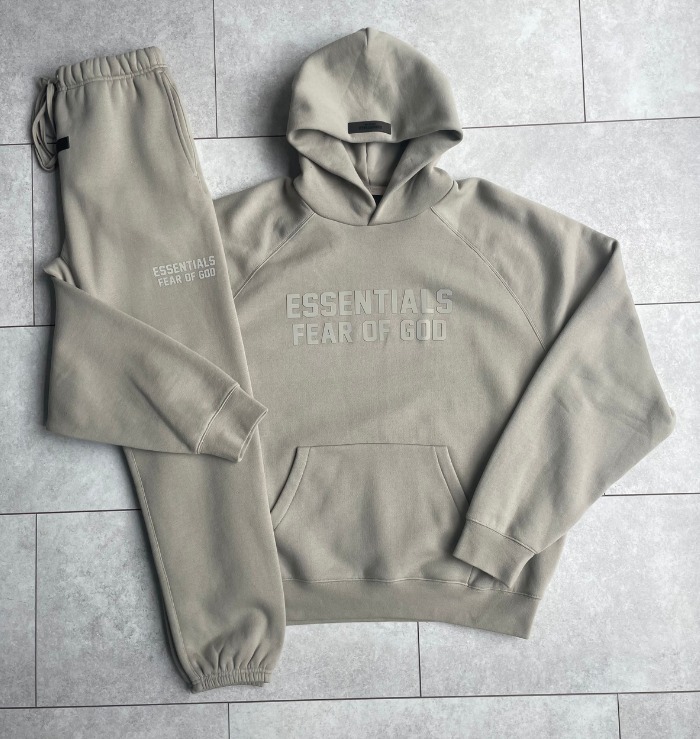Fall hiking is an experience like no other — the crisp air, vibrant foliage, and golden light create an atmosphere that feels both peaceful and adventurous. But the same season that makes hiking essential clothing magical also makes it unpredictable. Temperatures can swing from warm afternoons to chilly evenings, trails can shift from dry leaves to slick mud, and weather can turn from sunshine to drizzle in minutes.That’s why the secret to a successful fall hike lies in your clothing. The right gear will keep you comfortable, dry, and adaptable to nature’s changing moods. In this guide, we’ll explore the essential clothing for fall hiking trips — from base layers and outerwear to the accessories that make all the difference between a memorable hike and a miserable one.
1. The Fall Hiking Challenge: Adapting to Unpredictable Weather
Unlike summer or winter, fall brings a mix of elements — cool mornings, mild afternoons, and sudden wind or rain. Dressing for fall hiking isn’t about bulk or minimalism — it’s about versatility.
Your best approach? Layering. This system allows you to add or remove pieces based on temperature and activity level. Every hiker should think in terms of three key layers: base, mid, and outer.
2. The Base Layer: Moisture Management
Your base layer is the foundation of comfort. It sits directly against your skin, so its main job is to wick away sweat and keep you dry. Even in cool weather, you’ll sweat during uphill climbs — and moisture trapped against your skin will make you cold when you stop.
Best Fabrics:
-
Merino Wool: Naturally breathable, odor-resistant, and insulating even when damp.
-
Synthetic Materials (Polyester, Nylon, Spandex): Excellent for wicking moisture and quick drying.
-
Avoid Cotton: It traps moisture and leads to chilling.
Recommended Pieces:
-
Lightweight long-sleeve shirts or thermal tops.
-
Base-layer leggings or tights if temperatures are below 50°F (10°C).
Pro Tip: Choose a snug fit so the fabric can efficiently wick moisture away from your skin.
3. The Mid Layer: Insulation and Warmth
The mid layer provides the warmth you’ll need once the temperature drops or the wind picks up. It should trap heat without adding too much bulk or restricting movement.
Best Options:
-
Fleece Jackets: Lightweight and breathable — perfect for moderate hikes.
-
Insulated Vests: Keep your core warm while giving arms freedom to move.
-
Down or Synthetic Jackets: Offer superior warmth for higher elevations or colder climates.
-
Wool Sweaters: A cozy, stylish option for low-intensity hikes.
Fabric Insight:
-
Down: Ultra-warm but not great when wet (unless treated for water resistance).
-
Synthetic Insulation: Retains warmth even in damp conditions — ideal for fall’s unpredictable weather.
You may need to remove or pack your mid layer during intense activity and put it back on during breaks or descents.
4. The Outer Layer: Weather Protection
Your outer layer (or shell) shields you from wind, rain, and cold. Fall weather often includes misty rain, damp trails, and gusty winds — so this layer is critical.
Key Features to Look For:
-
Waterproof / Breathable Fabric: Gore-Tex, eVent, or similar membranes keep moisture out while letting sweat escape.
-
Windproof Construction: Prevents heat loss on exposed ridges or open trails.
-
Adjustable Hood and Cuffs: Helps seal out wind and rain.
-
Vents (like pit zips): Allow airflow during climbs.
Top Choices:
-
Lightweight Rain Jacket: Packs easily into your backpack when the sun’s out.
-
Softshell Jacket: Offers great flexibility and moderate protection from wind and drizzle.
-
Hard Shell Jacket: For harsher or high-altitude conditions.
5. Bottoms: Comfort and Mobility on the Trail
Your legs are constantly moving, so your pants should balance protection, stretch, and ventilation.
Essential Fall Hiking Pants:
-
Convertible Pants: Zip-off legs let you switch between shorts and pants as temperatures change.
-
Softshell Pants: Water-resistant, breathable, and flexible — perfect for brisk conditions.
-
Fleece-Lined Hiking Pants: For cooler hikes or higher elevations.
-
Leggings or Base Layer Tights: Great for layering under waterproof pants in colder conditions.
Fabric Tip: Look for nylon or spandex blends — they repel water, dry quickly, and stretch with your stride.
6. Footwear: Stability and Protection
Footwear is one of the most crucial choices for a fall hike. Trails can be slick with wet leaves, mud, or early frost, so you’ll need shoes that provide grip and support.
Options:
-
Hiking Boots: Offer ankle support, durability, and traction for rocky or uneven terrain.
-
Trail Shoes: Lighter and flexible — ideal for faster, shorter hikes.
-
Waterproof Footwear: Keeps feet dry in puddles, wet grass, or light snow.
Socks Matter:
-
Merino Wool Socks: Regulate temperature and wick away moisture.
-
Liner Socks: Thin inner socks to prevent blisters.
-
Avoid Cotton Socks: They hold moisture and cause chafing.
Pro Tip: Always break in new boots before your trip to avoid painful blisters.
7. Headwear: Retaining Body Heat
A surprising amount of heat escapes through your head, especially on windy trails. Fall calls for flexible options that provide warmth without overheating.
Recommended Headwear:
-
Light Beanie or Wool Hat: Keeps you warm during chilly mornings.
-
Headbands or Ear Warmers: Perfect for high-energy hikes where full coverage isn’t needed.
-
Cap or Brimmed Hat: Shields from sun glare and drizzle.
-
Buff or Neck Gaiter: Protects your neck and face from wind and cold air.
Opt for moisture-wicking materials so sweat doesn’t accumulate.
8. Gloves: Small Item, Big Impact
Cold hands can ruin an otherwise perfect hike. Choose gloves that balance warmth, dexterity, and weather resistance.
Options Include:
-
Light Fleece Gloves: Great for mild temperatures.
-
Insulated Waterproof Gloves: For rainy or frosty conditions.
-
Convertible Mittens: Flip between mittens (for warmth) and fingerless gloves (for dexterity).
If you expect wet conditions, carry a backup pair in a dry bag — gloves take a long time to dry once soaked.
9. Accessories: Function Meets Comfort
A few key accessories can make your hike safer and more enjoyable.
Must-Haves:
-
Gaiters: Prevent mud, water, and debris from entering your boots.
-
Sunglasses: Fall sunlight can be sharp, especially at high altitudes.
-
Backpack Rain Cover: Protects your gear during unexpected showers.
-
Trekking Poles: Help with balance on uneven, slippery terrain.
-
Moisture-Wicking Underwear: Keeps you comfortable on long hikes.
Small additions like hand warmers or toe warmers can also make a chilly day much more pleasant.
10. Fabrics and Technology: The Smart Side of Hiking Gear
Today’s hiking clothing uses advanced materials designed for performance:
-
Gore-Tex: Waterproof yet breathable — perfect for unpredictable fall weather.
-
Polartec Fleece: Lightweight warmth with breathability.
-
PrimaLoft: Synthetic insulation that stays warm even when wet.
-
DWR (Durable Water Repellent): Coating on jackets and pants to repel water.
-
Merino Wool: Natural temperature regulation and odor resistance.
When combining these materials, you get gear that’s light, warm, and adaptable — exactly what fall hiking requires.
11. Packing and Layering Strategy
For fall hikes, start with all three layers on cool mornings, then adjust throughout the day:
-
Morning: Base layer + mid layer + outer shell.
-
Afternoon: Remove mid layer if it warms up.
-
Evening: Add layers back as temperatures drop.
Always pack extra socks, gloves, and a lightweight insulated jacket — fall weather can change in minutes.
12. Care and Maintenance
Take care of your hiking gear to ensure it lasts for seasons to come:
-
Wash with gentle detergents designed for technical fabrics.
-
Reapply waterproof coatings as needed.
-
Dry gear thoroughly after hikes to prevent mildew.
-
Store clothing loosely to maintain insulation.
Good maintenance preserves warmth, breathability, and water resistance.
Conclusion
Fall hiking is about exploration Essentials Hoodies and connection — with nature, with the trail, and with yourself. But to truly enjoy it, you need to dress smartly.By combining moisture-wicking base layers, insulating mid layers, and weatherproof outerwear, you create a system that keeps you warm, dry, and ready for anything the season brings. Add sturdy boots, reliable accessories, and a mindful layering approach, and you’ll be equipped to handle every golden sunrise, muddy trail, and brisk mountain breeze.



